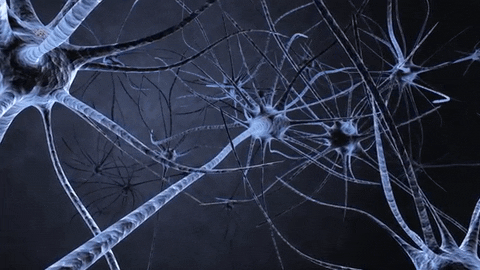Cortic amplification phenomenon: What is the twisted "dwarf picture"?
Author:Zhanlu CHEERS Time:2022.07.01

01

Many people think that Sir Xielington is the father of neuroscience in modern systems.
In the first 20 years of the 20th century, he and colleagues and students of Oxford University used physiological methods to study the cerebral cortex. At that time, this meant that when the animal behavior was measured, it was necessary to rely on electrical stimulation in the cortex area. Using this method, Xielinkon and his colleagues found that the forehead cortex of the primates contain a complete "sports map".

In 1917, the "Experimental Physiology Season" published an 87 -page paper, which summarized these studies, including experiments on 22 chimpanzees, 3 gorillas and 3 red hair orangutans.
Shelinkon found the primary sports cortex before returning to the center of the ape's brain. The central center was located in the cortex area in the front of the central groove.
When Slinton's student and American neurosurist White Pefield shared some unusual discovery in the process of neurosurgery in patients with epilepsy, the impact of these studies was truly revealed.

After conducting research with Shalinton, Penfield was internship at Yale University, a legendary figure in Yale University, American neurosurgeon Harvey Kuyin. He tempered his skills in Yale's operating room.
Later, Pefield came to Montreal and worked at McGill University. He created and led the Montreal Institute of Neurology.
In 19 years, he collected a lot of data from more than 400 skull cutting operations. During the craniotomy, the doctor had local anesthesia to the patient, unveiled a skull, and exposed the cerebral cortex.
Because the operation or electrical stimulation of the cerebral cortex does not cause any pain, Pattifield patients can still be awake during surgery. When he stimulates the difference in the patient's cerebral cortex to determine the source of epileptic seizures, the patient can still report his feeling.
In the process, Penfield and his collaborators, including Canadian psychologist Herb, can draw various tactiles caused by electrical stimuli in the front and rear of the central groove.

Pefield found that 75%of the point of tactileness was located behind the central government. According to Brloedman's point of view, the primary body feels the cortex, and the remaining 25%are located in front of the central government, which is where the primary sports cortex is located.
What is even more surprising is that in order to suppress seizures, it is necessary to remove the central government through surgery in several cases. He also reported that after the central government was removed before, it stimulated the central government to return to the body to produce physical exercise.
Pengfield believes that this proves that the feeling of stimulating sports cortex is not accompanied by electrical motion, or the nervous fiber from the primary body sensory cortex.
The primary sports cortex and the body feel that the cortex seems to share their functions. Although each area shows obvious functional bias, both sides of the central groove will promote similar feelings.
02

Note: This picture depicts the encounter between the "small dwarf" that is impossible and the cortex "small dwarf". The cortex "little dwarf" is based on the distribution of the primary body to feel the deformation of the human body. It is based on Pefield's research. The cortex "small dwarf mice" is a deformation characteristics of the peer -to -peer body, based on the distribution of the cortex of the primary body of the rodent. You can focus on the lips and hands that the dwarfs are exaggerated, as well as the beard, mouth, nose, and front paws that are exaggerated on the small dwarf mice. There is a cheese in the middle.
The "dwarf picture" that makes Pengfield is very satisfied with no similarities we usually see. Mrs. Kanter's "dwarf" was also severely distorted and looked weird. This twist is the result of the development process of "cortex magnification".
Excessive cortical amplification phenomenon represents the body area with the highest density of mechanical stimulation. These sensors are a series of highly adapted peripheral centers, which are responsible for turning tactile stimulation into potential, that is, the language of the brain.
Therefore, the dwarf's fingers, hands, and faces, especially the weekly and tongue, are exaggerated. Other body areas, including chests and trunk, seem to shrink, as if they are diet, although most of our skin exists here.

Fingers, hands, and faces contain a lot of mechanical stimulus sensors, so they are our most sophisticated tactile organs. We usually use them to create tactile images about the surrounding world. This is why when a object rubbing the skin of our back, it is difficult for us to accurately distinguish what object it is.
Cortic amplification phenomenon is not unique to humans.
Among each mammal that studied in the past 70 years, we found that this phenomenon is generally existed. Take the rat, for example, the "small dwarf mouse" exaggerated the exaggeration of the beard of rats, and the size of the front paw is far beyond the rear claws. Another example is the semi -aquatic and oval Australian mammalian duck bilies. In the body's body map, its beak is excessively enlarged.
The characteristics of these specific areas of the body are not unique to the cerebral cortex. Each subclacium relay station composed of a shaft bundle contains such a "topographic map". These subcortetic relay stations constitute a body sensing path. In the future, the touch information of the periphery of the body and the feedback feedback transmission from the physical experience from the muscles and tendons to the central nervous system.

For this reason, these "topographic maps" seem to be the basic physiological tools used to form touch. However, the contradiction appeared. Most extraordinary tactile experiences are undoubtedly a feeling we think exist in our body. From several months, human beings have been able to distinguish their bodies from other objects and other people. In our lives, we experience the world from the first person's first -person perspective and interact with it. However, our usual tactile experience, even those most private and most meaningful experiences, are different from Mrs. Kanter's "dwarf picture". The reason why this picture is strange is because it does not match our feeling.
"Brain Machine Crossing" tells the future of "human -machine integration", that is, the advent of the "brain interface era"!

Driven by technology in the future, the scene of science fiction blockbusters has gradually entered reality. Humans control the artificial tools through thinking, and now it sounds unimaginable and will become the norm in the future. From the depths of the ocean to the super -new star restricted area, and even the tiny cracks between our body, the scope of human beings will catch up with our ambition to explore unknown areas. This book is a brief development history of the "brain interface", which depicts us a new picture of human future.
- END -
Today Xiaoshu

On July 7, Xiaoshu today.In Yan Yan's summer heat, Zhejiang Satellite TV's Song Yu...
Professor Zhao Dongmei of Peking University: If there is a vibrato in the Song Dynasty, Su Shi will open the food number

Is there a middle -aged crisis in the Emperor of the Northern Song Dynasty? What s...